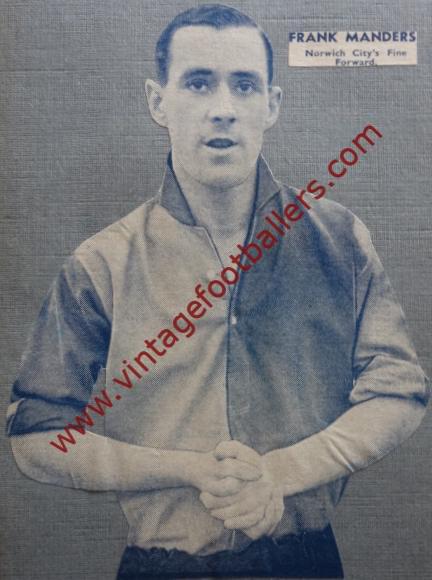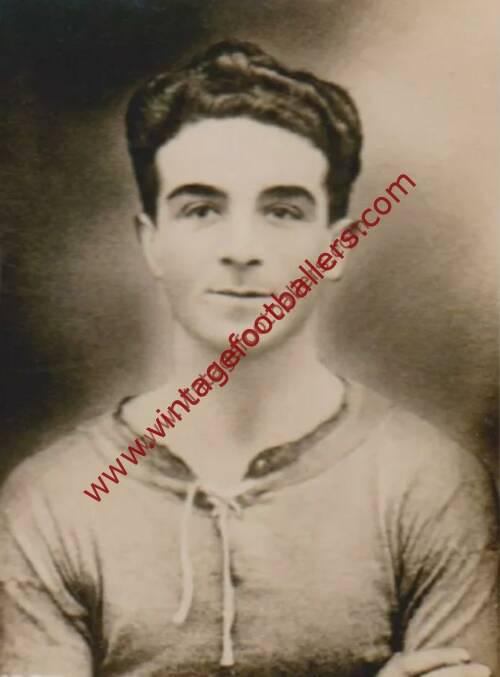Please choose your photo size from the drop down menu below.
If you wish your photo to be framed please select Yes.
Note: 16″x 20″not available in a frame.
Images can also be added to accessories. To order please follow these links
£8.95 – £49.95
Please choose your photo size from the drop down menu below.
If you wish your photo to be framed please select Yes.
Note: 16″x 20″not available in a frame.
Images can also be added to accessories. To order please follow these links
A man who would become one of the most successful early international football managers, Hoyland Common, Yorkshire born outside right George Raynor first played football in the junior leagues for Elsecar Bible Class in 1927, Mexborough Athletic in 1928 and Wombwell in 1929. His first professional club was Sheffield United whom he joined in 1930, but he didn’t make a first team appearance in the two years he was with the club. In the summer of 1932 he joined Third Division (North) Mansfield Town and made his Football League debut at Barrow in September the same year, but only scored once in 9 appearances before joining Rotherham United the following summer. He was a consistent performer at Millmoor, scoring 20 goals in 66 appearances before he was sold to Second Division Bury in February 1935. However he was never assured of a first team place at Gigg Lane, and by the time he joined Aldershot in the 1938 close season he had scored 4 times in 58 appearances for The Shakers.
He had one full season for The Shots scoring 4 goals in 37 appearances during 1938-39 and played twice in the truncated season before the start of the Second World War. During 1939-40 he was a ‘guest’ wartime player with Aldershot, Bournemouth, Bury, Clapton Orient, Crystal Palace and Hull City. He signed up as a physical training instructor (‘PTI”) in 1939 in order to train soldiers in the British Army. The Football Association had requested that all professional footballers become PTI’s if they were not inclined to see active service. Raynor was posted to Iraq and whilst in the course of working as a training instructor in Baghdad, Raynor helped a fellow teacher club together a group of students into a team which toured the neighbouring states as a representative of Iraq. His work in Iraq came to the notice of the Secretary of Stanley Rous. Thereafter, as Brian Glanville notes (with some poetic licence) in his The Story of the World Cup, “the FA whisked him in 1946 from reserve team trainer at Aldershot to the team managership of Sweden”.
In charge of Sweden, Raynor was an irascible, indefatigable figure, character notes that possibly aligned him more to a responsive Sweden than they ever would in conservative England and accordingly, with his insights into club management coming to the fore, Sweden quickly developed into a force. Under his tutelage, Sweden gave England a scare before losing 4-2 at Highbury in 1947.
The following year Sweden, famously, won the 1948 Olympic Games title defeating Yugoslavia 3-1 in the final, in front of 60,000 at Wembley. This was after having surpassed Austria, Denmark and South Korea in the earlier stages. At that stage Raynor was assisted by Putte Kock. They had assessed the team and decided that Nils Liedholm and Kjell Rosén could work effectively as defensive midfielders. The team had a core of players who would go on to play in Italy’s Serie Achampionship. Gunnar Gren, Gunnar Nordahl and Liedholm (later famously called Gre-No-Li) formed the wonderfully inventive striking force and each were picked up by impressed Italian scouts following the Gold-medal victory. Raynor remains the last English manager to lead a team to Olympic Gold.
Divested of his best players and belaboured by the constraints of domestic initiative whereby professionals were barred from playing for the national side, Raynor was still able to qualify the side for the 1950 FIFA World Cup in Brazil where the team overcame Italy and finished in third place; losing 3-2 to the eventual champions, Uruguay, after they were beaten 7-1 by a brilliant Brazilian team.
Raynor was still in charge of the national side for their Bronze medal performance at the 1952 Olympic Games in Helsinki and coached the national side during a two game tour in late Autumn 1953. One of those games included an international against Hungary in Budapest on November 15th. Raynor is reputed to have said: “If we win, I’ll paint [the Stalin statue’s] moustache red.” The game finished 2-2 (Kurt Hamrin, the Swedish right-winger, hitting the cross-bar in the final minute), against the brilliant Hungarian Golden Team, who had remained undefeated for over 4 years. On the journey back to Sweden, Raynor met Walter Winterbottom in Vienna and explained to him how to play the Hungarians, using man-to-man marking to cut out the threat of Nándor Hidegkuti. Winterbottom did not follow the advice and this, in part, led to England losing their home record against Hungary at Wembley Stadium on 22 November 1953.
By that stage the Swedish FA had decided to allow professionalism in domestic football, but there was still the need to go cap in hand to the Italian clubs in order to confirm the selection of Kurt Hamrin (from Padova) and Liedholm (at AC Milan) and there was still a need to convince the Swedish public of the need to play ‘foreigners’ in the national side. Raynor said “It would have been impossible for us to meet world-class opposition without such performers as Liedholm, Gren, Hamrin and Skoglund. Some people thought it wrong to play these “Italians” as the side was not representative of Swedish football. Perhaps it wasn’t, but it was representative of the footballers Sweden produced.”
Raynor managed Sweden to the World Cup Final against Brazil; a 3-1 win against 1954 FIFA World Champions West Germany confirmed their quality. He famously said that if Sweden get the first goal in the Final ‘Brazil would panic all over the show’. Up to that stage the Brazilians had yet to go a goal down and when they were held, particularly by the Welsh in the quarter-final, they had struggled to unlock the defence. As it happened the Swedes did score first; Liedholm scoring after four minutes, but Brazil rode the set-back and both Pelé and Vavá scored a brace in a 5-2 victory for the South Americans. The runners-up place is still the greatest achievement ever for Sweden in a major football competition.
Raynor drifted back and forth into club management throughout this time, with AIK in Stockholm (1948-1951), Juventus in 1954 and Lazio (1954-1955 season) and Coventry City in England (for 5 months from December 1955 to June 1956) but he was back as Sweden’s national manager for the 1958 FIFA World Cup held in Sweden. During his time at Coventry, he was asked to be the trainer for the Third Division (South) representative team in 1956-57.
Nine years after these triumphs Raynor was being made redundant after a short stint managing Doncaster Rovers in the English Fourth Division between June 1967 and November 1968. But perhaps nothing illustrates the contrast between Raynor’s international profile and his English one better than the fact that during his career he managed the likes of Lazio and later could only find work as a manager with the likes of Skegness Town (between 1958 and 1960).
Before Alf Ramsey in the 1966 FIFA World Cup, he was the only Englishman to put a national team into the Final of a World Cup.
| Weight | N/A |
|---|





